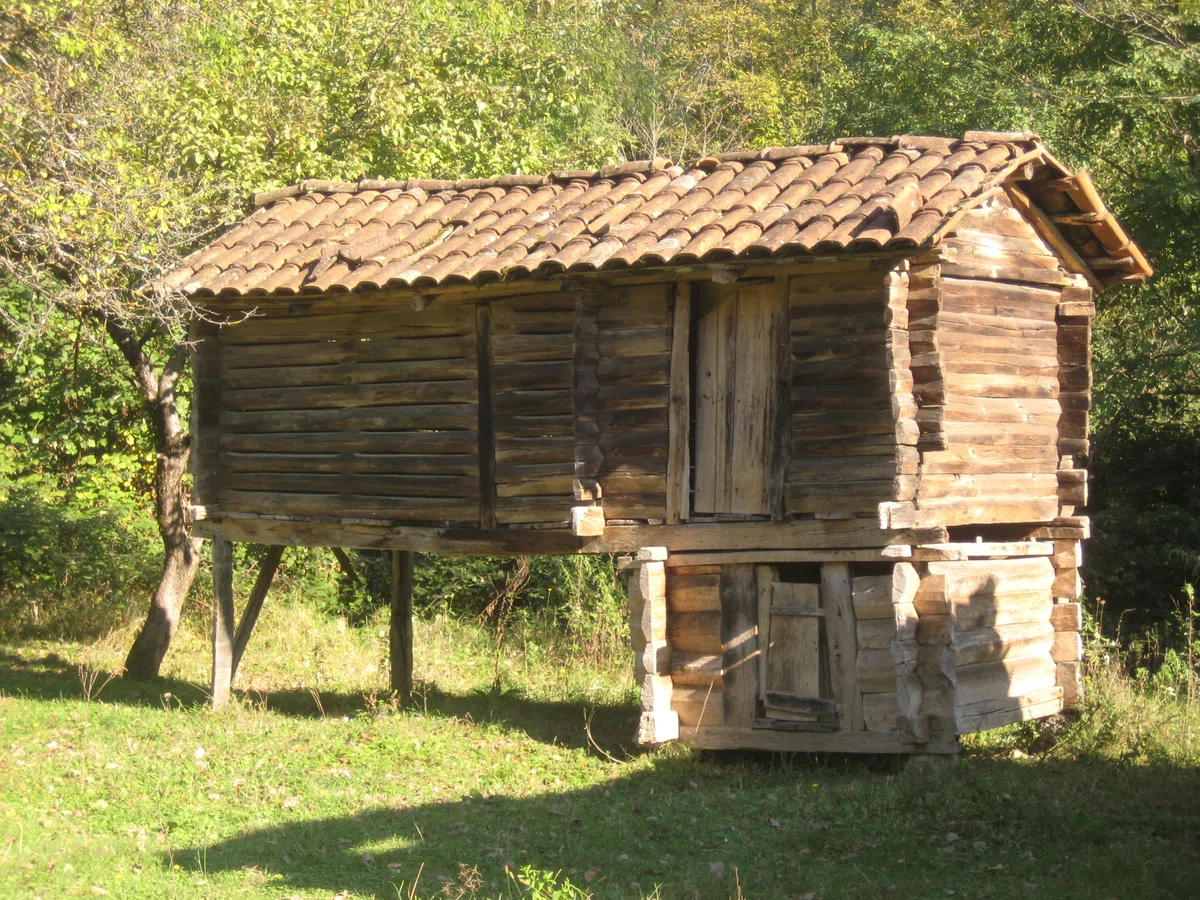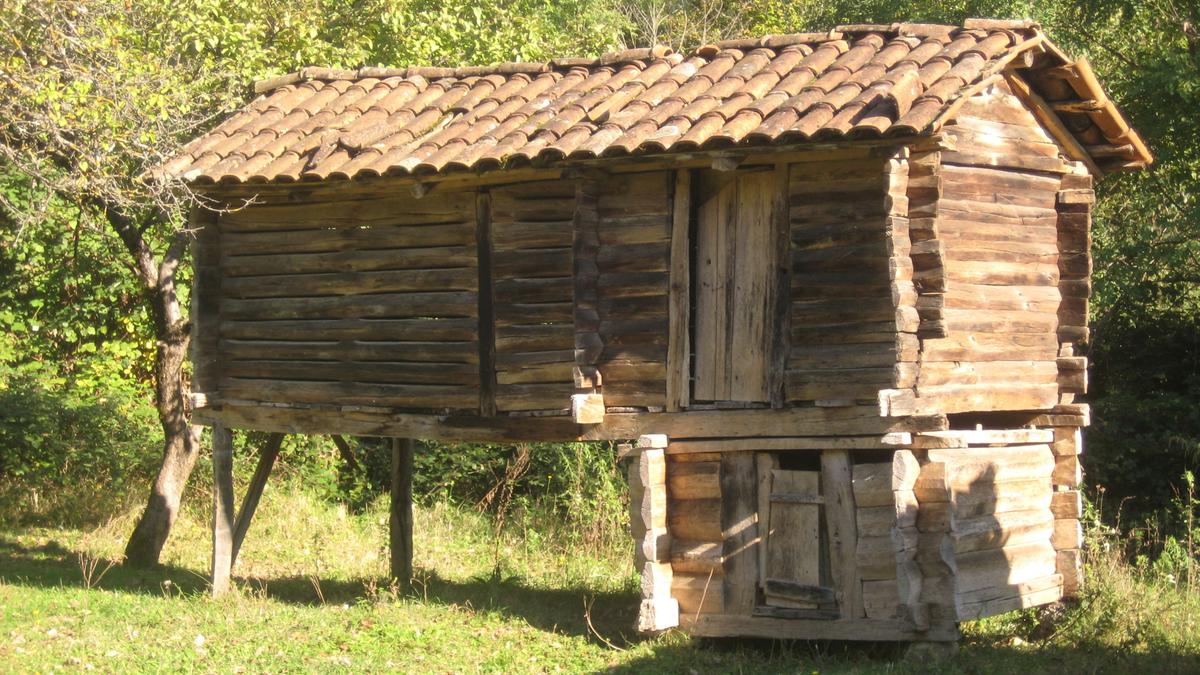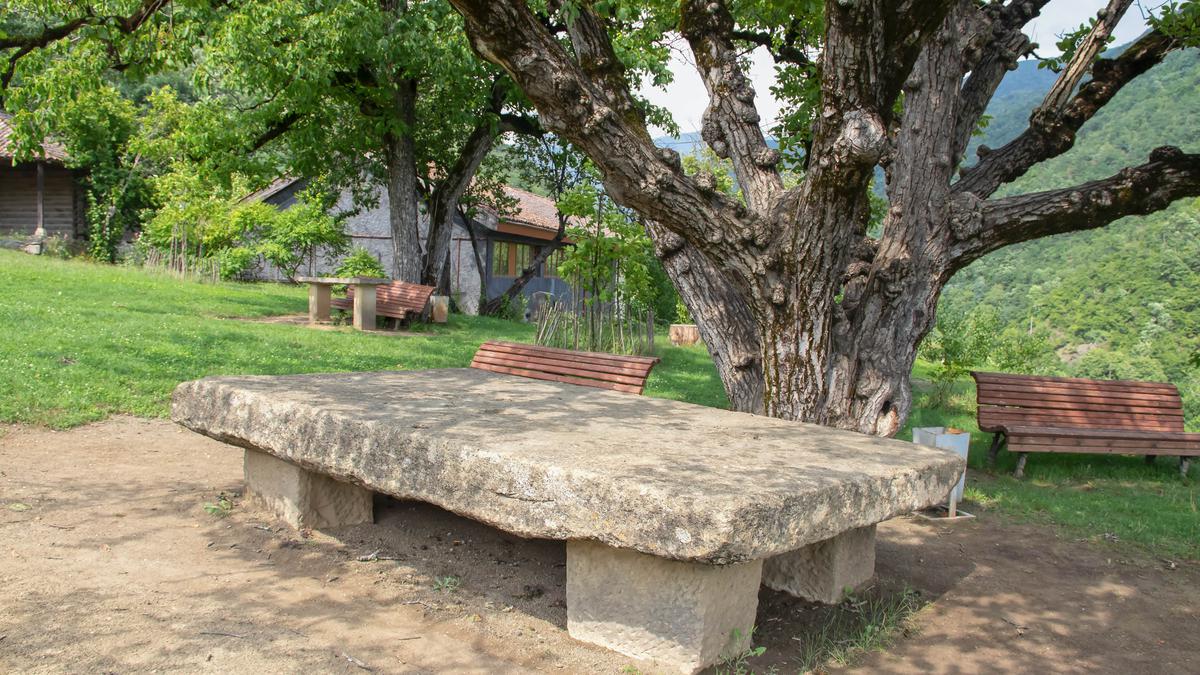
Exhibition of ancient artifacts in Georgia. Sachkhere Museum of Local Lore.
The Sachkhere Museum of Local Lore has a huge number of interesting ancient artifacts. Here you can see Boris Kuftin's cane, antique rings, buckles, pottery, a barrel tip, tubular axes and much more. If you want to touch the history, then by all means come here.
The Sachkhere Museum of Local History operates in the village of Skhvitori, in the “mother” garden of Akaki Tsereteli.
Back in 1857, in the newspaper “Droeba” (Time), brother Akaki Tsereteli, David Tsereteli wrote about gold items accidentally discovered in Sachkhere on the slope of the "Todadze Fortress". Later, research work was carried out by Giorgi Tsereteli, Ekvtime Takaishvili, Boris Kuftin, Otar Japaridze and others.
The museum houses the cane of academician Boris Kuftin, a rich archaeological collection: loop-shaped hairpins, rings, buckles, clay pottery, barrel tips, bayonet-shaped weapons, tubular axes of the Sachkhere type, bow fasteners, disc-shaped pins, etc.
According to Vakhushti Batonishvili, the village of Sachkhere is located on the road running from West to East, which crossed the Likht-Imereti Mountain through the Cheratkhevi gorge. The famous French traveler Jean Chardin and European missionaries in their notes on trade routes coming from India and Iran point to this route. Since its foundation (1978), the museum has had ethnographic buildings and structures: an oblong house, a marani (wine cellar), a barn and a granary for corn, various items made of wood, metal, ceramics and fabrics, characteristic of ethnographic life. Among the collections of the book religious fund of the museum, an important value is the Book of Prayers donated to the Trinity Chikha St. Dositey with the text of the manuscript he made, and the Gospel dated 1822, printed in the printing house of the royal court of Imereti, etc.

Sachkhere Museum of Local History, located in the village of Skhvitori, houses many unique artifacts related to the history of the region. One of the famous personalities whose belongings are in the museum is the Georgian writer Varvara Tsereteli. Her dairu, guitar and gramophone are just a small part of the exhibit that can be seen in the museum.
The museum also features many other antique items, including Boris Kuftin's cane, antique rings, buckles, pottery, a barrel tip, tubular axes and much more. Visitors can touch the history of the region, learn about the traditions and customs of its inhabitants.
Sakhkhere is an ancient settlement located on the road from west to east and is an important cultural and historical center of Georgia. Such outstanding Georgian personalities as Varvara Tsereteli, Boris Kuftin, Ekvtime Takaishvili, Otar Japaridze and others lived and created their works in this place. The museum houses a collection of archaeological finds collected in the Sakhere area, as well as ethnographic buildings and structures that allow visitors to see how people lived and worked in the past. The museum's collections also include a religious book fund, which contains unique and rare editions.
One of the famous artifacts of the museum is Boris Kuftin's cane. Boris Lvovich Kuftin was an outstanding Soviet and Russian physicist, academician of the Russian Academy of Sciences and president of the Russian Academy of Education.
In 1996, Richard Feynman was awarded the Nobel Prize in Physics for his discovery of quantum electrodynamics in crystals. This discovery made it possible to establish a connection between electrons and photons, which led to the creation of a new field in science - quantum electrodynamics. This effect was discovered back in the 1930s, but Feynman managed to create a mathematical model that explained this effect and made it possible to obtain numerical results that were consistent with the experiment. Feynman was the first to show how electromagnetic interactions can be explained in terms of quantum mechanics.
In addition to his scientific achievements, Richard Feynman was known for his unique approach to life and work. He was an inventive and eccentric person who had a sharp mind and a great sense of humor. In his autobiography "Surely You're Joking, Mr. Feynman!" he tells many interesting and funny stories from his life.
In addition, Richard Feynman was an excellent teacher and mentor. He not only gave lectures at universities, but also conducted scientific seminars and participated in the training of students. He was also one of the founders of the California Institute of Technology (Caltech) and created the Feynman Foundation to support scientific research.
Today, Richard Feynman remains one of the most respected and famous physicists in the world. His work is studied by scientists from all over the world, and his contribution to the development of science cannot be overestimated. His methods and approaches to scientific research continue to be an inspiration for many scientists.
Many scientific awards and prizes have been created in Richard Feynman's honor, including the Feynman Medal for achievements in particle physics, the Feynman Medal for excellence in teaching, and the Feynman Medal for Scientific Freedom. A crater on Mars and the main building of the California Institute of Technology, where he worked for many years, also bear his name.

Richard Feynman was not only a famous scientist, but also a remarkable teacher and popularizer of science. His lectures and books allowed millions of people to understand the most complex physical concepts and theories. In 1985, he wrote the book "Surely You're Joking, Mr. Feynman!" in which he talks about his life and scientific achievements, teaching and participation in the investigation of the Challenger disaster. However, in addition to scientific and popular works, Richard Feynman had another hobby - music. He played the drums, flute, clarinet and piano. In his book "How Are You Living? Mr. Feynman!" he talks about how he learned to play the drums in order to play with musicians, and even performed concerts in various clubs and scientific conferences.
Despite the fact that Richard Feynman passed away more than 30 years ago, his scientific ideas, lectures and books continue to inspire and motivate scientists around the world. In his works, he convinced people not to stop at what they had achieved, but to seek new knowledge and to understand the world around them more deeply.
Thus, Richard Feynman is a scientist, teacher, musician and popularizer of science, whose ideas and works continue to influence the development of science and inspire many people around the world. His contributions to various fields of science, especially physics, leave a deep mark on the history of science. In 1988, Feynman died of stomach cancer, but his scientific legacy continues to live on and inspire scientists around the world.
Many awards, medals and scholarships have been created in honor of Richard Feynman. One of the most prestigious awards is the Richard Feynman Award, which is presented each year to the best student in physics and mathematics at the California Institute of Technology (Caltech), where Feynman himself worked and taught.
Feynman is also known for his creative approaches to science, which included the use of humor, unconventional methods and intuitive images. He constantly questioned established scientific concepts and approaches, sincerely believing that science should be fun, curious, and inspiring.
In addition, Feynman also had an interest in other fields, including philosophy, music, and the visual arts. He was known for his lectures on physics to the general public, which he gave in various venues, including universities and television programs.
Today, Richard Feynman's scientific legacy continues to influence many areas of science, including quantum mechanics, quantum electrodynamics, cosmology, and particle theory. His work in quantum electrodynamics, which was awarded the Nobel Prize in 1965, opened up new avenues for the study of physical phenomena and made him one of the most influential physicists of the 20th century.
It is worth noting that Feynman was not only a talented scientist, but also an outstanding educator. He authored several physics textbooks that became classics in their field, and also lectured to students and the general public. Feynman was also known for his popular science books, including "QED: The Strange Theory of Light and Matter" and "Six Easy Pieces: Essentials of Physics Explained by Its Most Brilliant Teacher", which were written in simple language and became very popular among a wide audience.
Richard Feynman's important contribution to science was the development of the theory of quantum electrodynamics, which describes the interaction of light and matter at a microscopic level. Feynman developed his own approach to the theory, called "Feynman diagrams", which have become an important tool in the work of physicists around the world.
Feynman also made significant contributions to various areas of physics, including the theory of superfluids and the theory of quantum computing. He was one of the first scientists to begin exploring the possibilities of quantum computing and its applications in various fields of science and technology.
Today, Richard Feynman remains one of the most respected names in the scientific community. His contributions to physics and other fields of science continue to influence scientific development, and his methods of teaching and scientific research remain relevant to this day.
--------------------------
We would love to hear your opinion! Leave your comments and ask questions below the article. Your feedback helps us become better!







39 comments
Log in to leave a comment
Если вы знакомы с творчеством Церетели, то именно тут можно увидеть ее гитару, граммофон.
Музей выглядит скромненько, но при этом невероятно полон удивительными экспонатами.
Здесь можно увидеть огромное количество интересных старинных артефактов, такие как, трость Бориса Куфтина, старинные кольца, пряжки, глиняную посуду, стволовый наконечник, трубчатые топоры и многое другое. Музей основан в 1978 году.